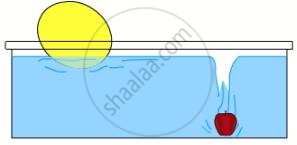Advertisements
Advertisements
Question
Explain briefly, how gases can be liquefied.
Solution
Gases can be liquefied by applying high pressure and lowering the temperature. Lowering the temperature decreases the kinetic energy of molecules of gas, and increasing the pressure, decreases the space between these particles. Both these effects, cause the molecules to come closer and lead to increase in the intermolecular force of attraction between these molecules. As a result, gas converts into liquid.
APPEARS IN
RELATED QUESTIONS
The Kelvin scale temperature is 0 K. What is the corresponding Celsius scale temperature ?
What is meant by saying that the latent heat of fusion of ice is 3.34 × 105 J/kg ?
What do you understand by the term 'latent heat' ? What are the two types of latent heat ?
Define the term 'latent heat of vaporisation' of a liquid. What is the value of the latent heat of vaporisation of water ?
When heat is constantly supplied by a gas burner with small flame to melt ice, then the temperature of ice during melting :
Fill in the blanks:
The molecules are at a greater distance in ______ compared to liquids.
Write whether the following statement is true or false:
A gas has no free surface.
Explain the term melting point
Why does this happen?
What you see in the picture.

State which of the three states of matter Le. solids, liquids or gases – have
(a) No definite volume
(b) A definite shape
(c) High density
(d) No free surfaces
(e) Particles – which diffuse very easily.
